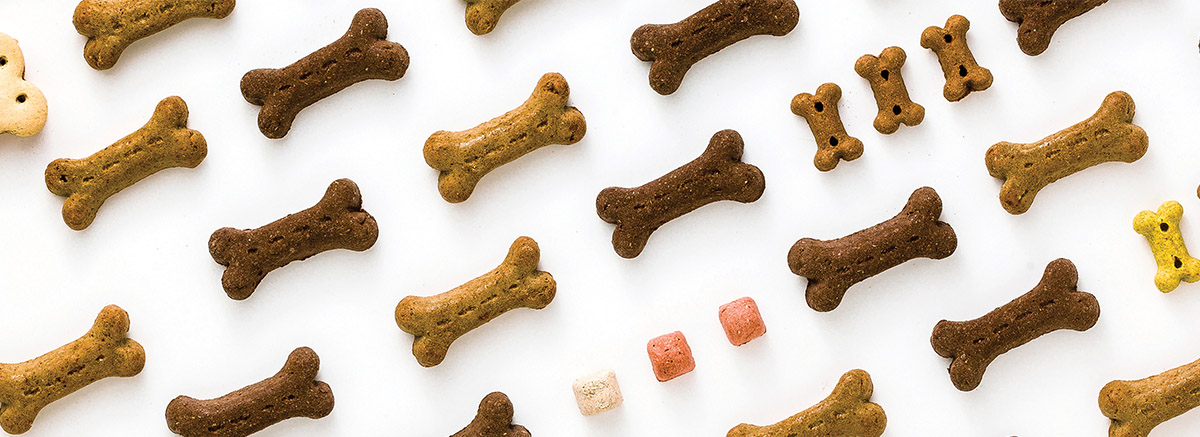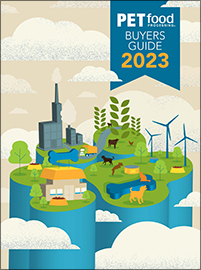This article was published in the July 2023 issue of Pet Food Processing. Read it and other articles from this issue in our July digital edition.
Pet food is among the most highly regulated of all food products, according to the Pet Food Institute (PFI), Washington, DC. The industry is well-known for its practice of robust food safety plans, regular testing and the practice of mock recalls. This was true even before the 2011 Food Safety Modernization Act (FSMA), the final rule for human food and animal feed. The industry knows the better the plan, the better prepared an organization will be. In addition to current good manufacturing practices, FSMA compliance prepares and safeguards products.
FSMA, which amended the Food, Drug, and Cosmetic Act of 1938, is viewed as the most comprehensive update to US food safety regulation in more than 70 years. FSMA focuses on the prevention of illness rather than reacting to, or correcting, issues that arise. FSMA also provides the US Food and Drug Administration (FDA) with the authority to conduct facility inspections to verify FSMA compliance.

Salmonella and mycotoxin contamination are two of the primary reasons for pet food product recalls.
|“If you have a hazard requiring a preventive control, you are required to have a recall plan,” said Paul Davis, Ph.D., director of quality, animal food safety and education, American Feed Industry Association (AFIA), Arlington, Va. “This is a prescriptive plan that should include the identification of a team that is trained on the responsibility along with the creation of a communication plan for customers.”
All ingredients and processes used in the creation of pet food and treats are potential hazards, and manufacturers must identify all foreseeable hazards and put steps in place to safeguard the safety of the products, according to Gary Huddleston, director of feed manufacturing and regulatory affairs, AFIA.
Simmons Pet Food, Siloam Springs, Ark., believes the key to quality pet food is ingredient control, but a pet food product can only be as good as its ingredients. There should be a primary reason for adding ingredients to a pet food product and specifications should call out the intended use of the ingredients. Suppliers are responsible for knowing more about the ingredients used — including the limitations — than anyone else.
"If you have a hazard requiring a preventive control, you are required to have a recall plan,” said Paul Davis, Ph.D., American Feed Industry Association.
Both the manufacturer of the raw material and the suppliers of the raw material are responsible for assessing the food safety of an ingredient. This includes understanding the inherent risks of an ingredient as well as the facility risk. Other things to consider include how the supplier is controlling, monitoring and/or mitigating risk, and if proper track-and-trace capabilities are in place.
Petsource, Seward, Neb., is a Level 3 Safe Quality Food-certified business. This includes third-party testing from an ISO 17025-certified lab, palatability studies, shelf-life testing, and a validated 5+ log reduction high pressure processing (HPP) process.
Strengthening the framework
It’s critical to know all the necessary elements are in place if the need for a recall should arise. Recalls are an integral part of the food safety system and follow a strict regulatory framework for removing product from the market. Recalls can be voluntary or involuntary and can include a test result out of specification with the company’s food safety plan, mislabeled product or an ingredient imbalance.
A recall may be issued by the pet food maker by their own initiative after following internal monitoring and safety programs. Or a recall may come through a request from the FDA or by an FDA order under statutory authority. A request can also arise from a federal or state regulator after reviewing feedback from pet owners, veterinarians, or testing of the finished product. Additionally, consumers can report complaints about a pet food product through the FDA Safety Reporting Portal.
Cohesive and coordinated action
While no pet food manufacturer wants a recall to occur, the possibility of one always exists. This is why the advanced preparation of a safety program is necessary, with processes in place and procedures locked down. PFI works closely with its members to maintain robust food safety plans that ensure the production of safe pet food. PFI also works internally with regulators to remove a product from circulation.
While the possibility of a new threat could always be on the horizon, many recalls feature previously seen foes. Salmonella remains the No. 1 recall issue, causing around 1.35 million infections, 26,500 hospitalizations and 420 deaths in the United States every year, according to an estimate from the Centers for Disease Control and Prevention (CDC). There is also growing awareness surrounding mycotoxins, which are poisonous substances produced by fungi or mold that can be toxic when eaten, absorbed into the skin or inhaled.

While recalls are a realistic concern of pet food processors, being prepared can help lessen the negative effects if and when one occurs.
|Other issues that could prompt a recall include nutrient deficiencies or nutrient-excess conditions and label issues and violations that inhibit proper traceability. Changeover procedures need to be in place and verified to ensure proper labeling, said Billie Johnson, Ph.D., food safety and regulatory compliance manager, BHJ North America, Omaha, Neb.
Critical control points — an essential component of a Hazard Analysis Critical Control Point (HACCP) food safety plan — preventative controls and operational prerequisite programs are other aspects of the recall process that some don’t consider, she added. These processes should be reviewed and verified to ensure batch integrity and product availability.
Assembling the team and scenario
Mock recalls are instrumental to the food safety process to ensure safeguards are properly in place. Best practices include the creation of and inputs from a diverse recall team, a scribe to journal all times/dates of the recall, collection of sample labels for federal authorities, and a thorough testing process. Necessary information should be available including up-to-date contact info for all team members and a clear delineation of responsibilities referencing specific actions to be taken by each team member.
Huddleston suggested making mock recalls as creative as possible and building them into the team culture. Scenarios should be difficult enough to provide ample rehearsal experience and allow everyone time to practice their roles. Mock recalls also benefit from an informative debriefing process post-practice along with the use of electronic systems for document control to make the process more efficient. These electronic systems may still be coupled with manual processes, depending on the facility. Each institution’s history and comfort level of risk will also inform its recall process, but AFIA recommends mock scenarios take place at least once a year, with two to three times a year being optimal. Such learnings need to reflect what could occur, and what needs to occur before a true event happens.
AFIA provides Preventive Controls Qualified Individual (PCQI) training courses, and its legislative and regulatory group works with members to enhance the recall preparedness process, including recommendations for assembling a robust recall team. This can include recall coordination, a PCQI, operations manager, public relations, sales and marketing, logistics and receiving, quality control, general counsel, administration support for recording, and FDA and state coordinators.
The facility recall coordinator is the main point person on the recall team and should be able to devote 100% of their time to the recall, Huddleston said. Johnson suggests front desk staff should also be trained in what to do when a regulator arrives at the facility. The front desk staff member is the first person to encounter the regulator and should have a clear understanding of what’s necessary for regulatory visits.
“At AFIA, we always recommend that employees have food safety woven into their cultures,” Davis said. “When processes change, the potential hazards also change, and we want employees to think about these challenges in order to mitigate them and to think of safety all of the time. Also, the better the culture is within the team, the less likely an organization will have an issue.”
Working with the public and customers
Culture also entails recognizing the viewpoints of those on the outside looking in. This includes keeping in mind a brand’s key audiences — company employees, suppliers, retail customers and others — who could be impacted by the recall, according to Hinda Mitchell, president and founder, Inspire PR, Columbus, Ohio. Communicating early and often, while also managing expectations, is key. In this scenario, speed is essential. Any perception that feet were dragged on issuing a recall will harm trust and credibility.
“Ensuring pet food safety is not just a job — it’s a passion that is personal to every pet food maker and to the pets they love,” said Hinda Mitchell, president and founder, Inspire PR.
“Lead with values,” she said. “Ensuring pet food safety is not just a job — it’s a passion that is personal to every pet food maker and to the pets they love. Pet food buyers understand that mistakes are made — the measure of a company’s long-term brand reputation is whether they did the right things in their immediate response and took appropriate corrective actions after the issue was identified.”
It’s also important to ensure the right people will be available when needed to participate and complete the recall process. This includes planning for any ripple effects created by work-from-home parameters regarding timely communication. If the management team can’t come together quickly, is there a backup person available in case the primary individual isn’t? Additionally, Microsoft Teams and Zoom are important tools used by regulators to communicate when an issue occurs.
“It’s difficult to be prepared for the next big crisis or emergency, but having a full crisis management program is important overall,” Johnson said. “Facilities may not have had COVID-19 spelled out in their programs, but many had contingency plans in place for respiratory illnesses that affected workplace environments, so it was an easy fix to add when it occurred. This is the level of preparedness we need to have in our crisis management and recall programs at all times.”
FDA recall classification
The US Food and Drug Administration (FDA) is the regulatory body responsible for finished pet food products, including treats and chews, and their ingredients. An ingredient can’t be used until it’s been accepted by FDA and adopted by the Association of American Feed Control Officials (AAFCO).
FDA classifies recalls in three classes. A Class I recall features a situation in which there is a reasonable probability that the use of or exposure to a violative product will cause serious adverse health consequences or death.
A Class II recall is a situation in which use of or exposure to a violative product may cause temporary or medically reversible adverse health consequences, or where the probability of serious adverse health consequences is remote.
The Class III recall is a situation in which use of or exposure to a violative product is not likely to cause adverse health consequences.
Read more about pet food safety on our Operations page.




